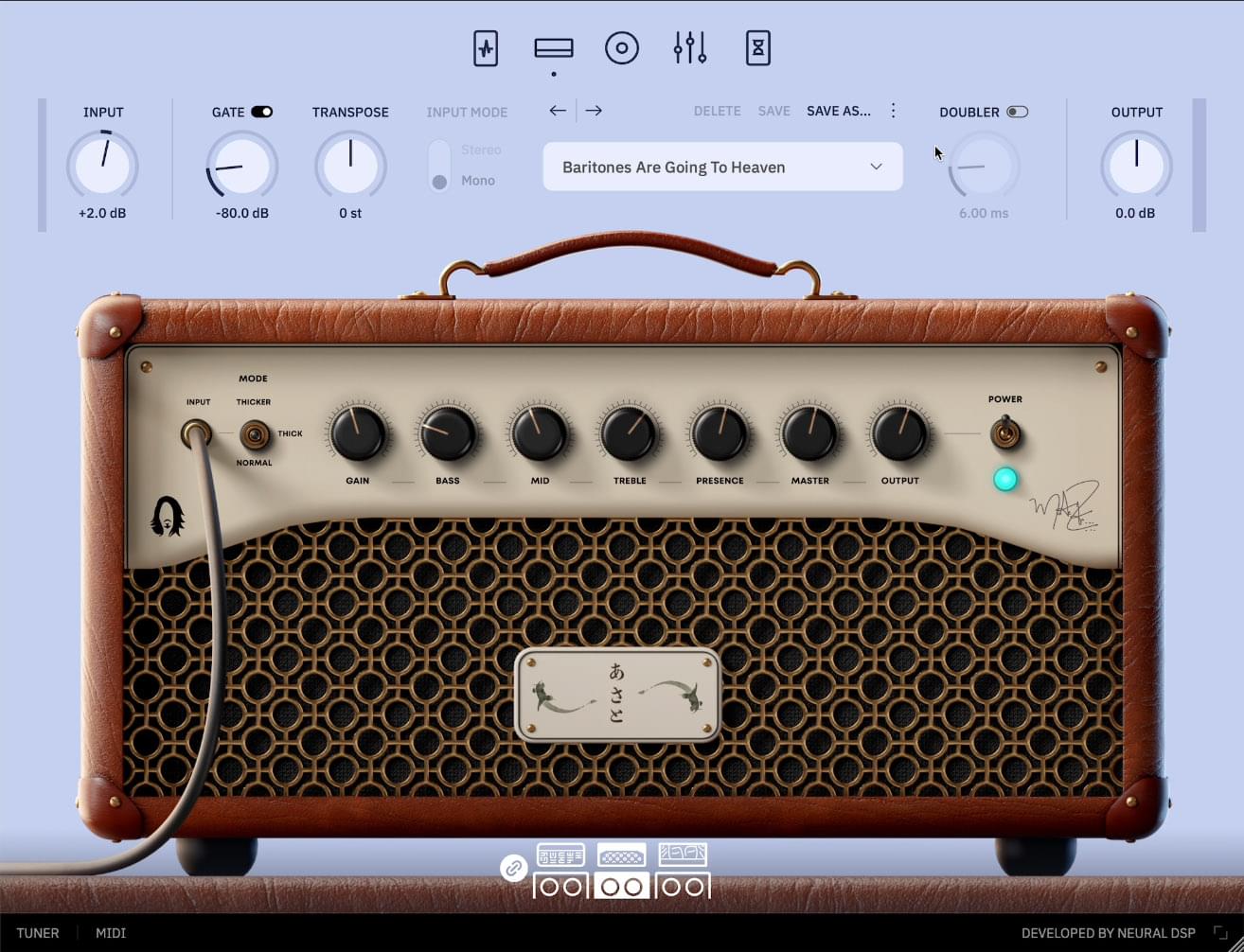One of the most influential guitarists of the last decade teams up with the company at the forefront of guitar and bass plugins to create perhaps the best guitar plugin on the market.
Disclaimer: I have no affiliation with Neural DSP, and nobody from the company asked me to write this post or shoot a video.
What is Archetype: Mateus Asato?
Unless you’ve been living under a rock, it’s been impossible not to stumble into Asato’s online presence. His expressive playing, technical prowess, and incredible sense of rhythm have gained him worldwide recognition that is well-deserved. Mateus has also been a long-time Neural DSP’s Quad Cortex user. So the question about his signature plugin hasn’t been ‘if’ but ‘when’. The moment I saw that the plugin had been released, I hit the download button.
Specifications
- 3 amplifiers (Vintage Clean, Modern Clean, Lead)
- 4 pedals (Comp, OD1, OD2, Mod)
- Cabsim and IR loader
- 9-band graphic EQ, one per amplifier
- Echo / reverb
- Transpose and doubler effects
- Tuner
- Metronome
- You can run the plugin in your DAW or as a standalone app
- iLok account and iLok License Manager needed

What Are The Amps In The Asato Plugin?
According to Mateus’ video on his own channel, the three amps modeled for his plugin are Matchless DC30’s second channel (Vintage Clean), Mesa/Boogie Lonestar (Modern Clean), and Bogner Shiva 20th anniversary’s second channel (Lead).
What Are The pedals In The Asato Plugin?
According to Mateus the compressor pedal is based on the Diamond compressor by Diamond Pedals. The first overdrive is a blend of two overdrives: the top two knobs and the lower left knob are based on Protein Overdrive by Browne Amplification and the lower right knob is a blend of Jan Ray by Vemuram. The second overdrive is based on 1981 DRV, which Mateus describes as ‘Rat on steroids’.
The Mod pedal is a combination of Strymon Flint tremolo and the chorus and vibrato are based on the Jam pedals Waterfall.
Plugin Overview
As with other Neural DSP plugins, the Asato plugin looks fantastic. I really like the retro/modern design of the amps, and the user interface doesn’t overwhelm you with options. While the design is minimalistic, the plugin offers you plenty of options to tweak and dial in exactly the kind of tones you want.

I Played Every Preset of the Plugin. Here’s What I Learned:
Archetype: Mateus Asato wasn’t my first Neural DSP plugin I’ve tried, but to me personally, it is the best one so far. The three amps modeled into this plugin are pretty much the holy trinity of amps I like to use: ‘Vox, clean Fender, and a hot-rodded Marshall’. All the amps modeled here are modernized versions of those classics, but there’s still plenty of vintage vibes retained here.
The tones of this plugin are really inspiring, and I think that made this plugin stand out from the rest. All Neural DSP plugins come with a plethora of presets made by artists. While this may sound exciting at first, but in my experience, by the time you’re hitting preset number 100, everything starts sounding the same. However this wasn’t the case with the Asato plugin: browsing through presets, I kept finding new combinations of amps and effects—tremolo sounds in the style of Green Day, something very Paul Gilbert inspired, and then jump to lush ambient cleans. I think the artists creating these presets were inspired by this plugin’s tones, and you could hear that.
Is Neural DSP Archetype: Mateus Asato good?
If it’s not clear yet, this is my favorite Neural DSP plugin I’ve tried. Actually, it’s probably my favorite guitar plugin ever. It looks beautiful, has the three amps I like the most, and I found the collection of presets in it inspiring.
And the best thing is: you can try it out for free for 14 days and see if it works for you.
►►Find out more: https://neuraldsp.com/plugins/archetype-mateus-asato
►►Gear I Use (affiliate): https://www.thomann.de/fi/thlpg_to75kzs7bv.html

Leave a Reply